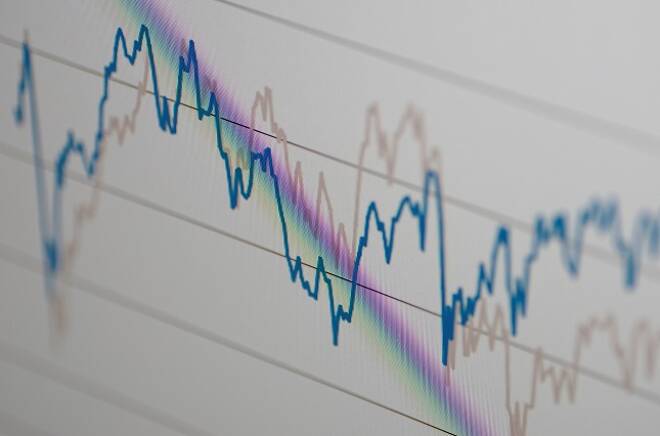Advertisement
Advertisement
Treasury Yield Plunge Points to Lower Expectations for Inflation
By:
However, since early October investors buying government debt saw the direction of inflation differently. If you recall, inflation and economic expectations dictate the movement of long-term rates. Investors do this by estimating how much they should be compensated beyond inflation for holding government debt over several years.
Treasury futures continued to surge on Thursday with the benchmark 10-year Treasury note falling to 2.83 percent as investors flocked to safe-haven assets amid another steep sell-off in the U.S. equity markets on Thursday. The catalysts behind the price action were fear of an escalation of the trade conflict and a possible U.S. economic slowdown.
Additionally, the yield on the 30-year Treasury bond dropped 4 basis points to 3.136 percent. The yield on the 2-year Treasury note sank 6 basis points to 2.752 percent.
The main point of contention for fixed-income investors this week has been a phenomenon known as an inversion in the Treasury yield curve. Yield curves typically slope upward, because an investor expects higher returns as they take on more risk for longer periods of time.
However recently, the spread between the 2-year and 10-year yields has narrowed, while the spread between the 3-year and 5-year yields inverted on Monday. That inversion is what’s making investors nervous because it tends to precede economic downturns.
A recession doesn’t usually occur immediately. Economists warned that it could be few months to two years before the recession shows up in the data. The classic definition of a recession is two consecutive contractions in the quarterly GDP.
The most closely watched sign of a recession will be the inversion of the 2-year Treasury yield and the 10-year Treasury yield. On Thursday, the fear of a recession was alleviated a little after the yield on the 2-year Treasury note fell significantly.
Besides the fear of an escalation of the trade conflict and a possible U.S. economic slowdown, Treasury investors are also paying close attention to inflation data. This is because recently, Fed Chair Jerome Powell and several of his colleagues warned about the economy overheating. They also strongly indicated they were widely in favor of an interest rate hike in December and perhaps as many as three more in 2018 in order to combat the expected surge in inflation.
However, since early October investors buying government debt saw the direction of inflation differently. If you recall, inflation and economic expectations dictate the movement of long-term rates. Investors do this by estimating how much they should be compensated beyond inflation for holding government debt over several years.
On Tuesday, the spread between the 5-year Treasury inflation-protected securities, or TIPS, and the corresponding 5-year Treasury note hit 1.72 percentage points. This is the best estimate of where the market feels inflation is headed. Since it’s down from 2.00 percent in October, it’s easy to conclude that investors are looking for inflation to weaken, which may lead the Fed to abandon a rate hike in December, while adjusting lower the number of expected rate hikes in 2019.
About the Author
James Hyerczykauthor
James Hyerczyk is a U.S. based seasoned technical analyst and educator with over 40 years of experience in market analysis and trading, specializing in chart patterns and price movement. He is the author of two books on technical analysis and has a background in both futures and stock markets.
Advertisement
